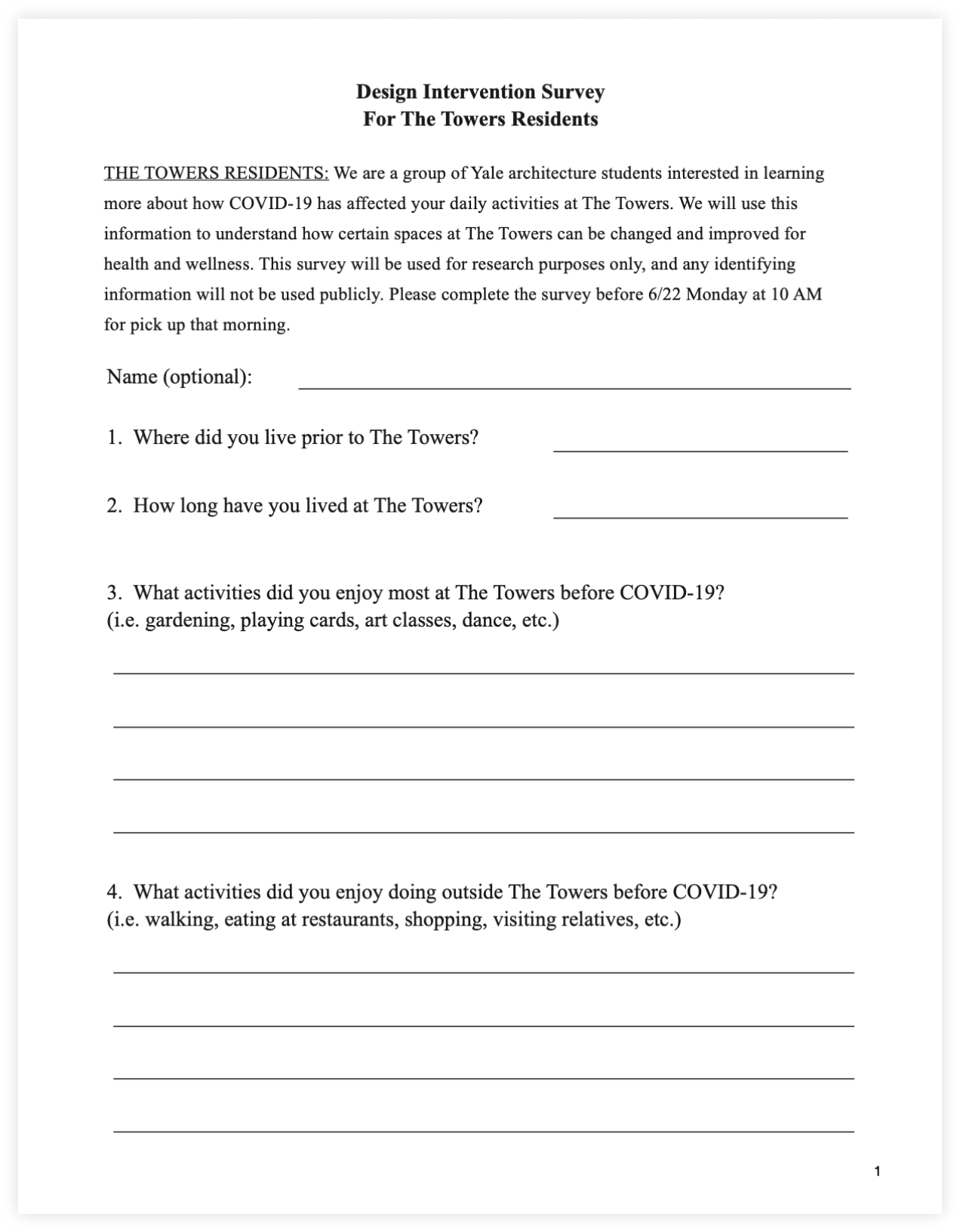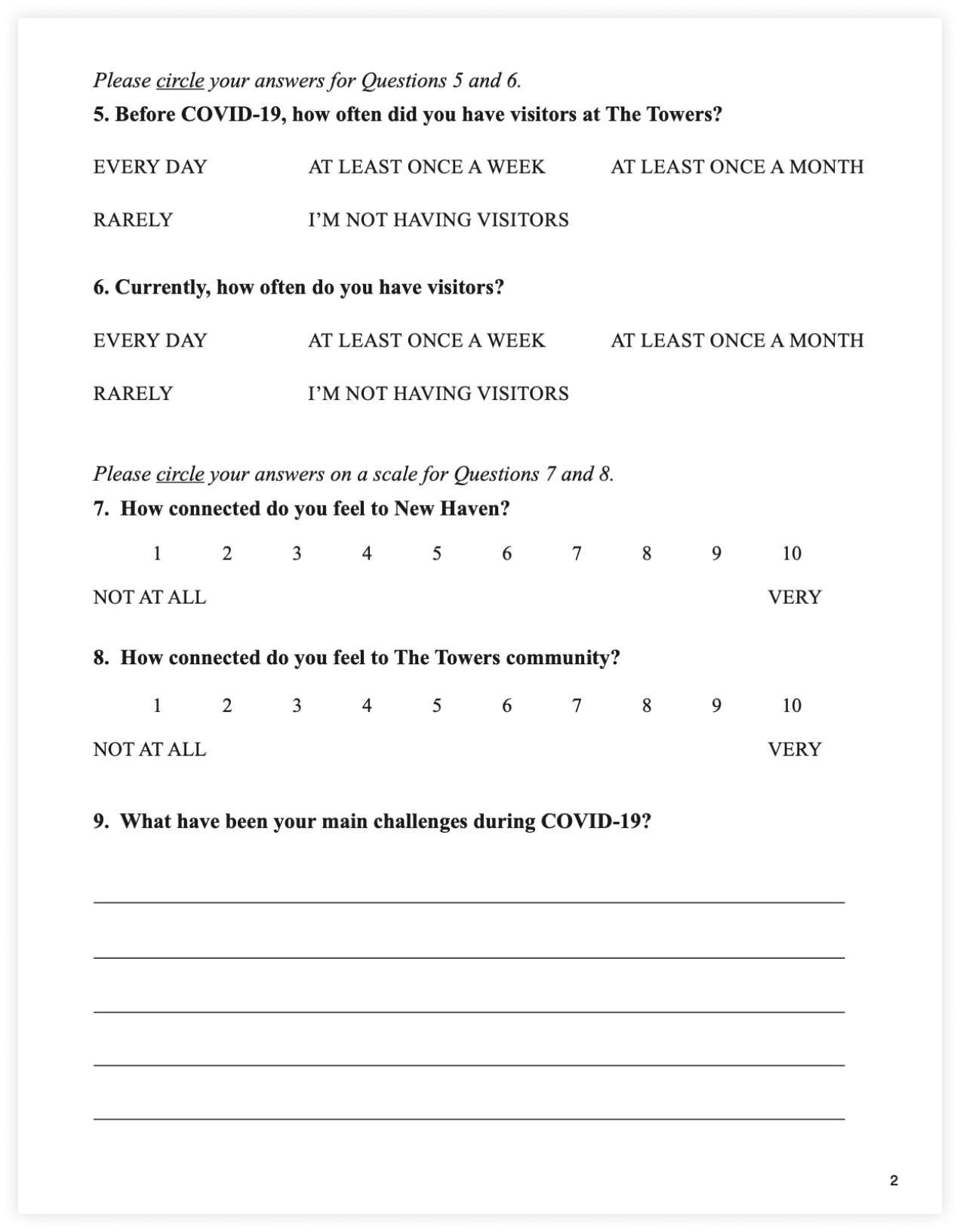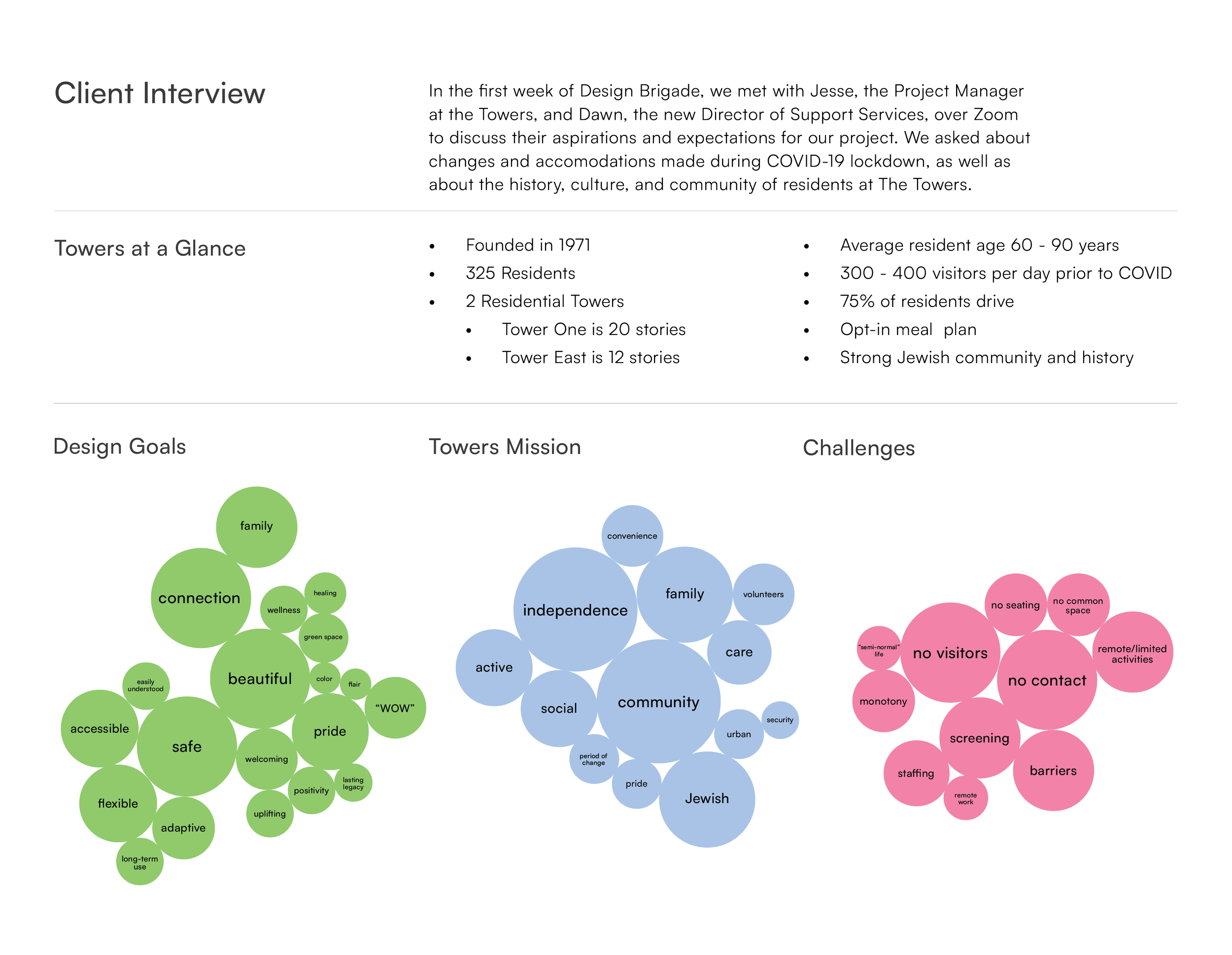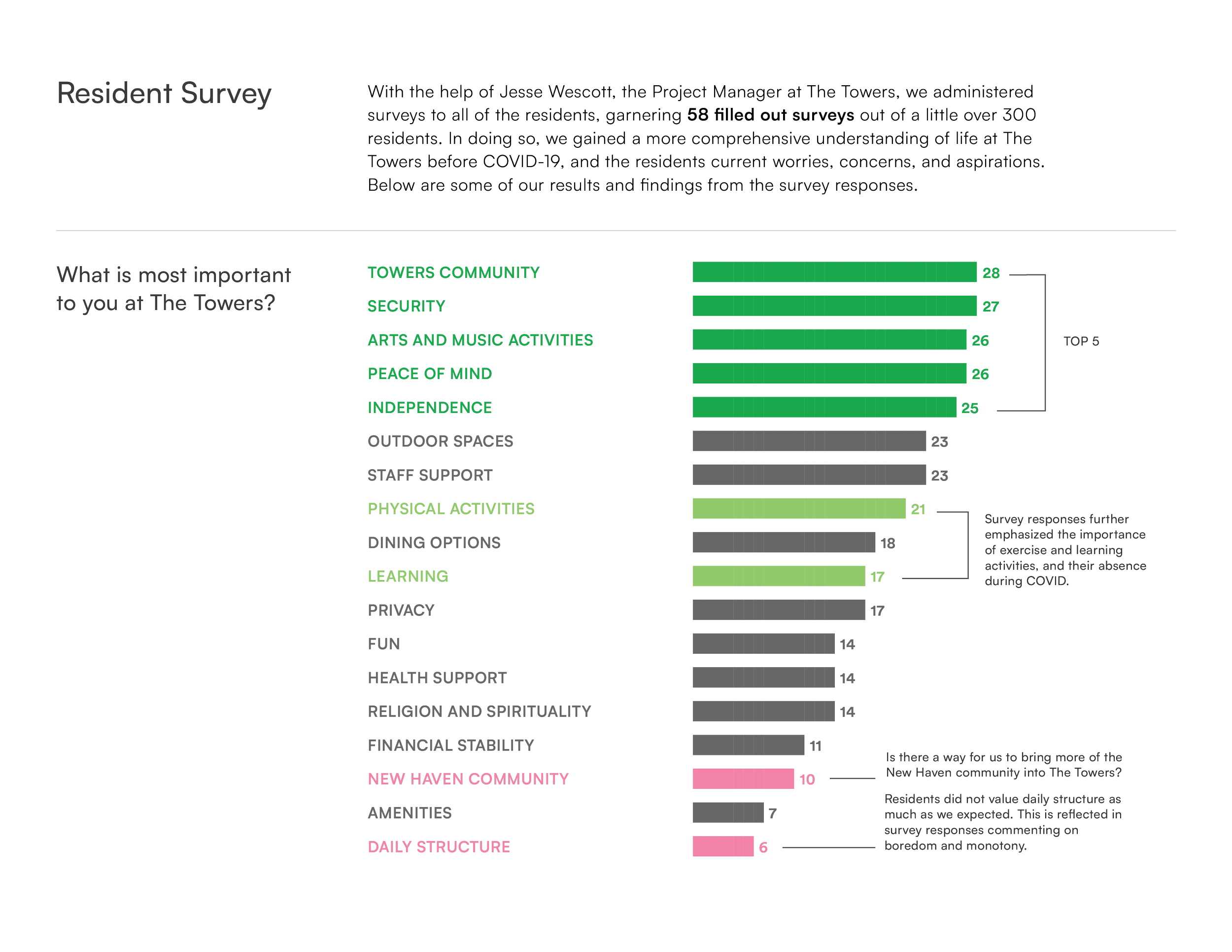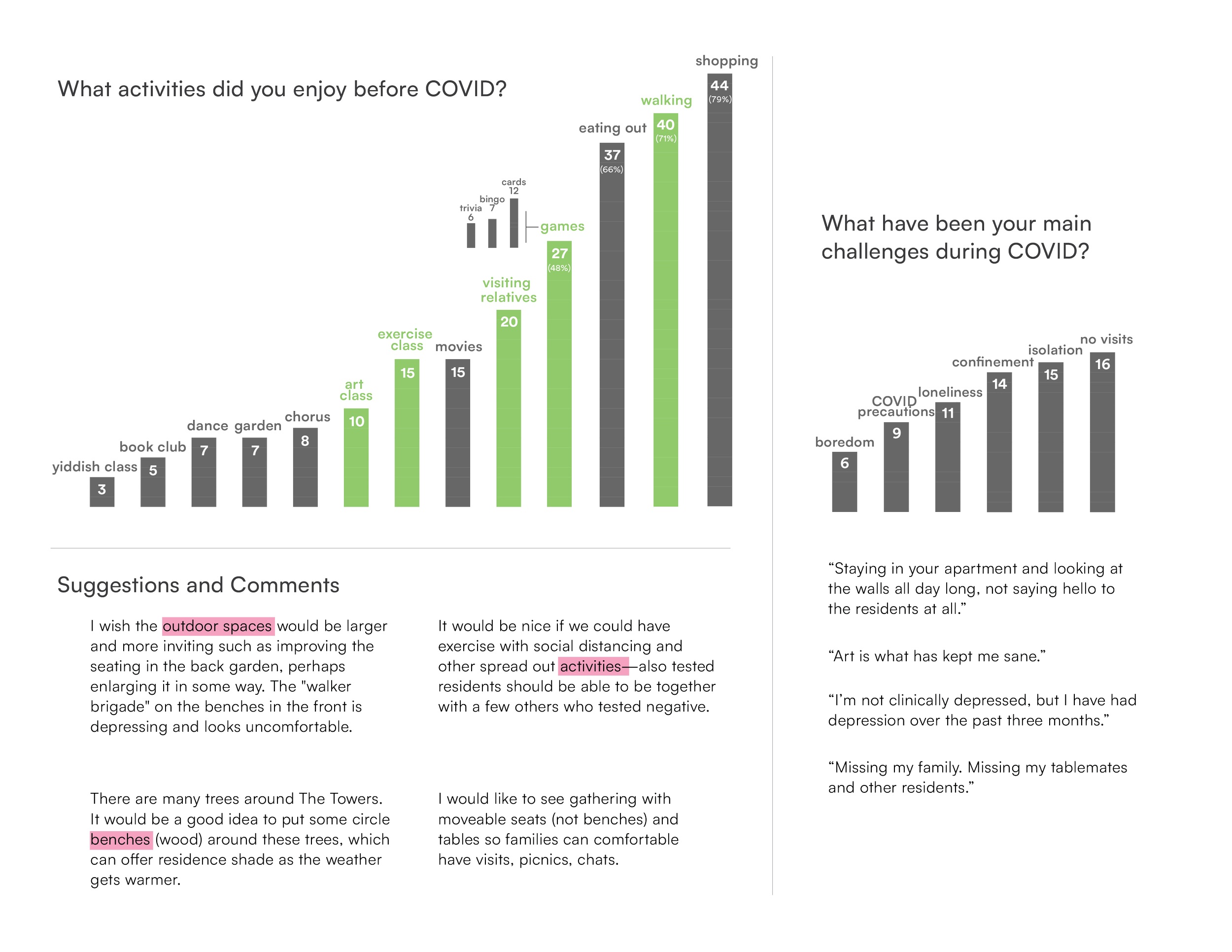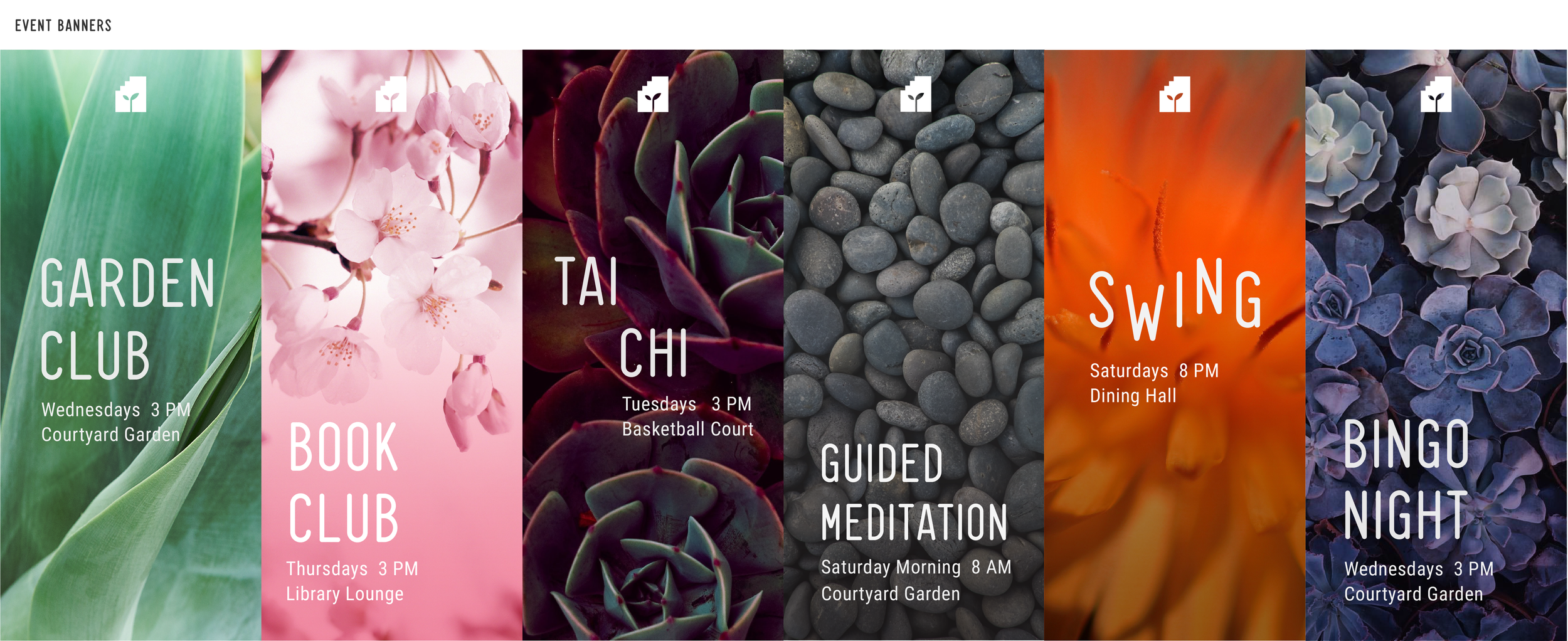
Design Brigade Project
Design Brigade is a structured summer project that connects architecture and design students to new spatial problems in the era of COVID-19. In summer 2020, I worked on a design proposal for community activity and confidence in health safety protocols for The Towers, a senior living community in New Haven, CT.
Project supported by Atelier Cho Thompson and Yale CCAM.
TiMELINE
2020 Summer
ROLE
Environmental Design
Branding
TOOLS
Rhino, VRay, Adobe Illustrator, Photoshop
team
Ivy Li, Huy Truong, Janelle Schmidt, Vicky Wu, Sasha Zweibel
0 / Project Brief
Challenge: How can we facilitate family togetherness for one of our most vulnerable populations during this pandemic?
Senior living communities and caretakers are bearing a jarringly disproportionate impact from coronavirus in the United States, further exacerbating the conditions of older adulthood. My project’s client was The Towers, a senior living community in New Haven. To keep the community safe during the pandemic, Towers residents have sacrificed connection and independence while staff have been working tirelessly to support their unprecedented needs.
1 / Research
User Interviews and Surveys
First, we wanted to understand the history and community at The Towers. We interviewed administration to understand their goals and vision for the future of the residence, and on several site visits we had a chance to chat and interview some of the residents (socially-distanced). Our research culminated in a paper survey we sent out to all of the residents with the help of staff, and we received almost 70 responses. Below is a summary of our findings.
Spatial Research
In addition to user research, we visited the site numerous times to understand how The Towers changed spatially after COVID-19 restrictions. We noticed that although all of the indoor seating and gathering spaces had been removed, many residents congregated at the entrance of The Towers, especially in the middle of the day. While The Towers also boasts a well-kept garden courtyard, residents were less interested in spending time there because it is walled off and further from foot traffic.
Red dots represent areas of resident congregation. Yellow areas represent underutilized spaces.
Insights
Isolation, fear, boredom, and lack of exercise were the main problems that residents were facing.
Residents of The Towers have turned to art, solitary activities, and remotely connecting with family to help combat these challenges.
Many residents specifically mentioned wanting an inviting outdoor space, and suggested shaded seating, landscaped walking paths, and other outdoor activities.
Although remembering COVID protocols is difficult for many, residents feel that The Towers staff has kept them safe.
Refined Challenge: How can we campaign against boredom, create a strong sense of community, and instill confidence in health protocols?
2 / Ideation
Ideation occurred continuously the ten weeks as we explored ideas ranging from a community mural to exercise stations to a residents’ story archive. Ultimately we settled on,
Wayfinding - a walking trail that incorporates signage for protocols and circulation markers
Pods - points for safe and distanced gathering that include shaded seating and interactive art and exercise activities
Our team split into two groups fleshing out each idea, and I was part of wayfinding design. We received feedback every couple weeks from designers at Atelier Cho Thompson, The Towers administration, and other community experts.
Design Language
After converging on two design ideas, we realized that we needed a consistent design language that was also cohesive with The Towers’ existing residences. We also needed to ensure that whatever we designed was accessible for senior users. Over a long Zoom brainstorming session, we converged on three main design elements and a mood board that would serve as the reference for the rest of the weeks’ designs.
Clear geometry - Using compositions with squares and circles, clean lines, and standardized building elements such as lumber.
Contextual - Fitting with the existing site conditions, incorporating the step motif already present throughout The Towers architecture, and contrasting the heavy brutalism of the architecture with lightness.
Refined - Elegant, but not luxury, using a neutral palette with colored accents when necessary to maintain a timelessness while also not losing interest in the design.
3 / Final Designs
Inspired by The Towers’ beautiful campus, we saw many opportunities for existing resting spots around the building to be utilized more, and encourage residents to exercise. To address residents’ desire for more outdoor activity, we propose a series of trail markings and signage around the campus that tells the story of The Towers. We aim to…
Encourage residents to exercise
Provide educational and interactive activity
Dispersing spaces for gathering outdoors
Instill strong sense of community and history
Proposed sign locations. Map by Sasha Zweibel.
Signage
The design for signage was very inspired by a step-motif that recurs throughout The Towers architecture, and utilizes refreshed branding. After discussing with our clients, we wanted to focus on telling the story of The Towers within a greater New Haven context of development and urban renewal.
Visual Design
Creating a cohesive visual design that represented The Towers was critical to tying all the components of our design together. Inspired by my many site visits and conversations with residents, I revitalized The Towers branding to represent the community into the 21st century. The colors and leaf iconography draw from The Towers’ original branding, while the step motif is a quotation from the buildings’ post-modern architecture.
In addition to our Towers Trail proposal, the brand refresh applies to other graphic applications. Nature-inspired imagery ties together the foliage on The Towers campus and the community’s well-kept courtyard garden. Graphics advertise weekly events at The Towers as well as wellness cards residents can use to share their thoughts and stay connected.
